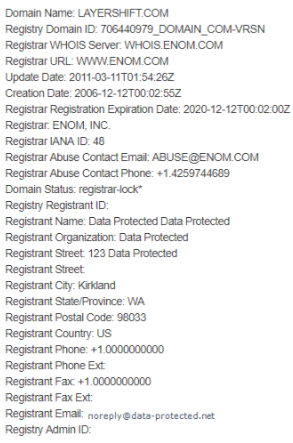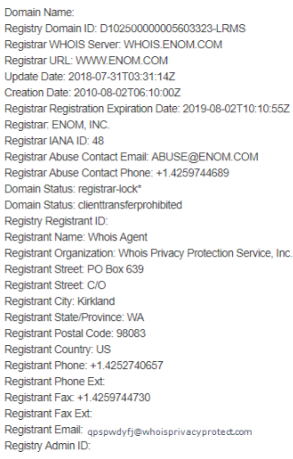Using Whois privacy for a domain
Contents
What is Whois privacy
When a domain name is registered, the registrar requires your full name, address, phone number and email address to be provided. This information is then entered into the Whois database and was traditionally made publicly available to anyone on the internet to search for and utilise in any which way they wish. With Whois Privacy, these details would be masked, so access to this information is restricted from public consumption. Some of the main benefits of masking your data are reducing spam, reducing Identity theft and concealing your physical location.
Whois before GDPR
.uk domains
Before the introduction of GDPR, if you registered a .UK domain via Nominet then all registrant details would be published by default. Non-trading individuals could opt out of having their address listed publicly via the Whois privacy service, free of charge, but the rest of their personal data would still be available.
Other TLDs
Similarly, if you held a .com domain name or similar TLD such as .org, .net, .info, .biz, .eu, .in, .io, etc then your details would also be shared as standard, but you would have the option to mask your personal data entirely using the Whois Privacy service, available at an additional fee.
Current regulations
As of May 25th 2018, the new GDPR guidelines have come into place meaning that as standard, all domains will now have the below information hidden from public consumption:
- Registrant name
- Registrant address
- Registrant telephone number
- Registrant email address

So, is there still a need for Whois ID Protect?
The answer to this would definitely be Yes. Although the data is now no longer publicly accessible, it’s still available via the ‘gated whois’ service which can be accessed by accredited 3rd parties such as Law Enforcement Authorities, Commercial Litigators & Security Community Members. With the Whois ID Protect activated they will only have access to the users contact data and should they require any further information on the domain registrant they would need to seek a relevant court order before the data would be released by the relevant compliance team.
A further benefit of the Whois ID Protect service is that it also provides a way for third parties to contact the domain owner via the privacy service email address displayed in the protected Whois, this option will not be provided as standard as part of the Whois service post GDPR. In addition, the personal data associated with a domain that is protected by Whois privacy will not be shared with any registries.
For legal reasons, ownership disputes for example, it’s important that the domain contact information is always kept accurate and up to date. The registration agreement that all domain owners accept as part of registering a domain confirms that all information provided will need to be accurate, current and reliable. These are ICANN imposed conditions, and registrants risk having their domain suspended or cancelled if these requirements are not met.
The graphic below shows the details which are now included as standard on the Whois database.

With Whois privacy you get a unique email address @whoisprivacyprotect.com which catches all mail and forwards it to your real email account. The emails are forwarded to the registrant contacts email address only and the ID Protect email is changed regularly to prevent spam.
Hiding Whois privacy details for an existing domain
If you have already registered a domain name with us, and later decide you wish to hide your Whois details, please send us a request to enable Whois privacy for your domain to domains@layershift.com
Hiding Whois details for a new domain
When you place the domain registration order your can enable the Whois privacy service by ticking the checkbox below:
For more details on how to register a new domain, please see our article about domain registration.